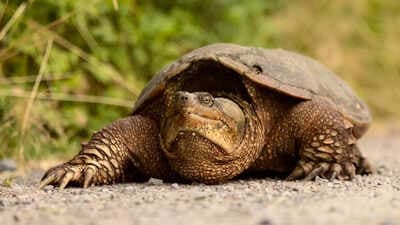The snapping turtle, famous for its powerful jaws and prehistoric look, is a true living fossil that has inhabited North America for over 90 million years. While often feared, these turtles are crucial to wetland ecosystems, acting as scavengers and helping regulate populations of smaller aquatic creatures.Their biology is equally fascinating, particularly their method of determining gender, which depends on environmental factors during egg development. Rising global temperatures, however, are beginning to disrupt this delicate balance, threatening population stability. As climate change alters sex ratios, the survival of these ancient reptiles may be at risk, highlighting the intricate connection between evolution, ecology, and modern environmental challenges.How nest temperature decides a snapping turtle’s genderUnlike mammals, snapping turtles do not have a fixed sex at birth. When they hatch from their eggs, they are not inherently male or female. Instead, the environment, specifically the temperature of the soil surrounding the nest, determines their sex. This phenomenon, known as temperature-dependent sex determination (TSD), is well-documented in herpetology studies and wildlife encyclopaedias.For the common snapping turtle (Chelydra serpentina), TSD works as follows:Cooler nest temperatures around 22°C (71.6°F) generally produce male hatchlings.Warmer nest temperatures above 28°C (82.4°F) lead to female hatchlings.Intermediate temperatures may produce a mix of both sexes or a skewed ratio, influenced by subtle environmental factors.This means that even a minor shift in temperature during incubation can influence the gender balance of an entire turtle generation.Warmer nests put snapping turtles’ survival at riskWhile this may sound like a remarkable biology fact, it carries serious ecological implications. Rising global temperatures are altering soil conditions in turtle nesting areas. Warmer nesting grounds can result in predominantly female hatchlings, creating a gender imbalance in wild populations. In some regions, scientists are already observing nearly all-female clutches.This imbalance threatens the long-term survival of snapping turtles.Fewer males in a population mean fewer mating opportunities, potentially reducing reproductive success over generations. For an animal that has survived since the age of dinosaurs, a few degrees of temperature change may have profound consequences.Impact of climate change on snapping turtlesThe phenomenon of TSD highlights the subtle yet critical ways climate change affects wildlife. Unlike immediate threats such as habitat destruction or pollution, temperature-driven sex determination shows how even minor environmental changes can ripple through an ecosystem.In wetlands where soil temperatures are steadily rising, populations of snapping turtles could experience skewed sex ratios, undermining natural breeding cycles and population stability.Without intervention, this could jeopardise the survival of a species that has persisted for millions of years.Practical steps to protect snapping turtlesFortunately, there are practical steps that can support snapping turtle populations:Protect nesting areas: Avoid disturbing known turtle nesting sites, particularly during spring and summer.Provide shade near wetlands: Planting trees can help regulate soil temperatures, reducing the risk of nests overheating.Support conservation efforts: Many organisations monitor turtle nests and relocate eggs when necessary to ensure a balanced sex ratio.Understanding the connection between temperature and turtle gender emphasises the importance of climate action and habitat protection. Small interventions in local environments can make a measurable difference in preserving these ancient reptiles for future generations.Also Read |King cobra might be the smartest snake in the world: Know more about its behaviour and hunting startegies
Rising Temperatures Threaten Ancient Snapping Turtles' Survival
Times of India•

Full News
Share:
Disclaimer: This content has not been generated, created or edited by Achira News.
Publisher: Times of India
Want to join the conversation?
Download our mobile app to comment, share your thoughts, and interact with other readers.